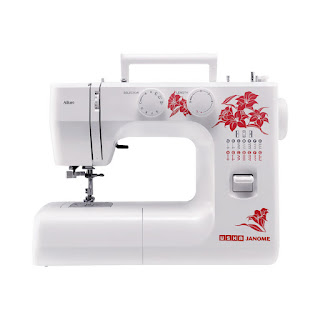Singer Sewing Machine Showroom In Chennai - VS Sewing Machines |
SEWING MACHINE SENSING DEVICE DEVELOPMENT FOR SMART FACTORY
Among the processes for making final products using fibers, the final process can be called a sewing process. The sewing process generally corresponds to the process that requires the most manpower in the production of textile products. The cost of sewing has gradually increased due to the recent rise in labor costs. The automation of the sewing process and the smart factory are expected to be carried out along with the fourth industrial revolution. In order to make the sewing factories smart, it is essential to apply smart sensing technology to the sewing machines. Also, sewing Process In order to grasp real-time situation, a system to monitor the status of each machine is needed. This study can be regarded as a part of technology development for automation and unmanned sewing process for final CPS(cyber-physical system) implementation. Three techniques have been developed in the sewing machine modification technology to assist the smarting and sewing process of the sewing machine. Three kinds of developed technology are a bobbin remaining amount detecting technique, stitch length control, and monitoring techniques. As a result of step-by-step technology development to realize CPS finally, it is a partial technology development of automation through some modification of sewing machine. https://vssewingmachine.in/ The developed technology is expected to be used as a technology for future smart sewing automation plant construction.A.Device for checking and indicating the rest of under- thread sewing yarn of sewing machine The sewing work can work in a situation where there is no under-thread by mistake. This leads to defective products and economic losses. To solve this problem, there is a need for a device for detecting the remaining amount of under-thread and transmitting it to an operator. Fig. 3 shows the sensing signal configuration for system design to detect the residual under-thread amount and the system configuration diagram to control it by linking it. The orange block shows the status of the warning lights, the PLC, the touch screen, and the main brake, while the blue block indicates each sensor and control signal for control.
Each component of the test apparatus for the detection of the residual thread volume consists of the lower part of the sewing machine and the display part. Under-thread residual sensing device was designed and implemented as primary and secondary sensing parts. The primary sensing uses a cylinder (CXSM630) for the bobbin and a SMAT-8M sensor for the FESTO position transmitter.[9] The system is implemented so that the remaining amount of the bottom thread can be calculated by the data that the cylinder pin advances and senses the distance gap.
Secondary detection shows the sensing principle to detect and warn the bobbin rotation state while reducing the defect caused by the bobbin not rotating when the bobbin is tangled or defective in Fig.6. To check the bobbin rotation status, the Omron NPN type photo sensor (E3Z-LL61) checks the rotation of the bobbin with four pairs of black and white stickers at 45 degrees on the bobbin.
B.Stitch control device and sewing thread information detection system concept configurationIn order to make smart factory of sewing factory, it is necessary to prevent worker’s mistakes and to record and confirm the current work. Figure 7 shows the position where the residual under-thread detection device and the stitch automatic control device are to be attached in the sewing machine being used in the sewing factory. In order to automatically adjust the stitches, the information about the fabric currently being worked on is entered in advance, so that the number of stitches can be automatically adjusted.
C.Information flow of the sewing machine detected from sensors for smart sewing process Fig. 8 shows the flow of information obtained from the parts(under-thread residual detection device, automatic stitch control device, monitoring system) developed for the sewing process smartization. The collected information is displayed in the monitoring system, and it is transmitted to the POP system, the PDM system and the final customer-linked system, so that the sewing process can be made smart.
It is a study to apply smart factory to the textile industry in this research and development. A study on the smartization of sewing process among several textile streams was conducted.[12-13] In order to make the sewing machine smart, we applied the same sewing machine which is used in the present industrial field and modified the sewing machine. First, the residual amount of the under-thread was detected to reduce the worker’s mistake and product defect. Secondly, in the sewing industry where workers are aging, it is possible to control the automatic stitch number according to the product type. Next, monitoring of the overall sewing process requires further work on the presser foot pressure control, tension control, POP(point of production) system and all monitoring data interlocks.
https://www.facebook.com/VS-Sewing-Machine-Showroom-187482192172101/

No comments:
Post a Comment